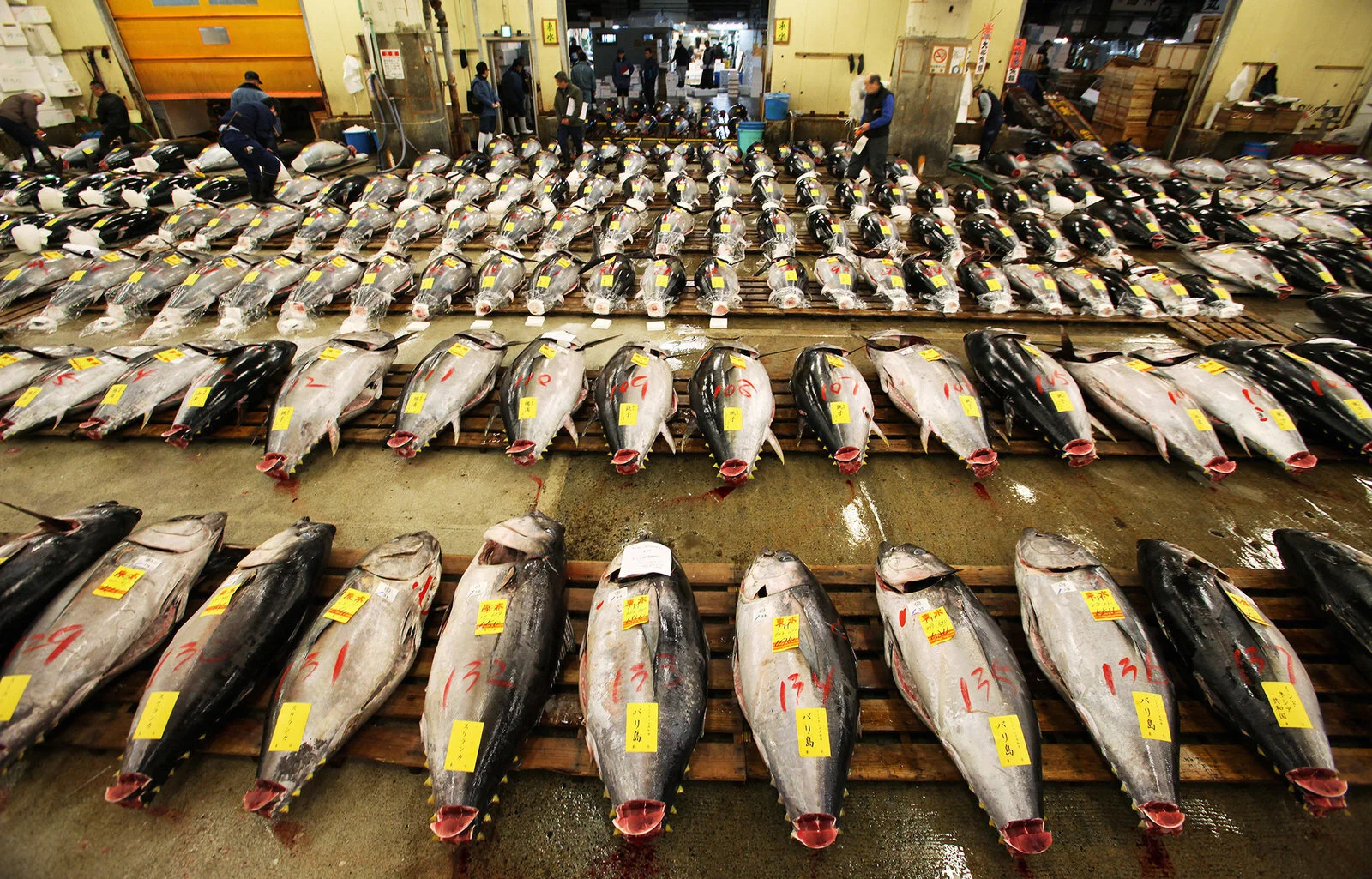What will be the next step in steering the tuna fisheries towards a more sustainable course? That was the question popping up in last week’s Tuna Night at the new MSC Belgium headquarters in the center of Antwerp. A selected audience of industry, government, research and trade was invited to figure out a ‘recipe’ for a sustainable tuna industry in the future. They were in search for a new wave in quest for sustainable tuna.
Director Hans Verhoeven of the Belgium based market research iVOX presented an interesting Belgian consumer market audit. The conclusion: the consumer has some dedication to ocean sustainability issues, but this did not translated yet into his or her behavior as buyers in the seafood market. There is a certain trust in ecolabels for seafood, but many don’t know where to look for. The knowledge on tuna is rudimentary and mostly limited to the vague notion that there is some kind of problem with overfishing. Part of the consumer public even don’t buy tuna, because they think the fish is ‘on the boarder of extinction’.
The good news is, one would say, that the notion of sustainability is embedded with the Belgian consumers. In the Antwerp Tuna Night, many participants expressed the conviction that sustainability has become an issue that is there to stay. A remarkable milestone that was less than self-evident a decade ago, when a wave of worries about the collapsing stock of the Atlantic bluefin tuna pushed sustainable tuna on the agenda.
Ten years later we might conclude that the bluefin is saved thanks to many factors among which a better management of the tuna stocks. As a result, sustainable tuna fisheries are becoming less a priority in the campaigns of many NGOs. It has become more of a mainstream issue in the broader discussions around responsible food chains. Many stakeholders in tuna fisheries, and not only in Belgium, have the feeling that we need a new wave for sustainability. The challenge is to explore ways to make it happen when it comes to buying tuna.
Let’s go back to the original idea that sustainable fisheries can be driven by demand. The so-called Theory of Change is the driving principle behind market-based certification schemes like MSC. The idea is that if the market knows where to look for (the right label), demand for more sustainable tuna will grow. The chain will have to deliver according to this changing demand.
Scholars (1) have already concluded that the original Theory of Change (version 1.0) was succeeded by newer versions. Originally it was thought that consumer at the end of the chain would steer the sustainable demand. But NGO’s started to direct their activities towards retailers instead (version 2.0), after the strategy of influencing consumers proofed to have limited results. Then, to address the supposedly limited quantity of sustainable supply, the NGOs started their own sustainability schemes, like Fisheries Improvement Projects (FIPs). Meanwhile, suppliers and distributors came with their own commitments, like the International Seafood Sustainability Foundation (ISSF), the Atún de Pesca Responsable or FAD-free labels. (version 3.0)
That is where we are now. The retailers can choose between a range of certifications and commitments on sustainability. On first sight that seems a good thing: let thousand sustainable certifications and commitments blossom and compete. But the negative effects are evident: the quality of the sustainability schemes that are offered widely varies. There is a natural tendency for a race to the bottom: all kind of semi-certifications are entering the market that are designed to give the product a sustainable image, while in reality the contribution to sustainable tuna fisheries is doubtful. That can end in an ugly way, like the recent US criminal court case for consumer fraud using the Dolphin Safe label. (see my blog).
This has to change. Of course, state intervention might end this practice of messy certifications and commitments. But it might well be that the national authorities will take their time to intervene in this complicated battlefield of Tuna Wars. The interests at stake are high. Meanwhile, the retailers carry the burden to find out what is sustainable tuna and what not. A tricky business that is not without risks.
So, it might well be that we need a Theory of Change version 4.0 in which a new actor will enter the seafood chain: an independent adviser who steers the retailers in purchasing their sustainable tuna and advises on the risks of the different schemes available. Maybe this new kid on the block is the ‘recipe’ for a new wave towards sustainable tuna fisheries.
(1) C. A. Roheim, S. R. Bush, F. Asche, J. N. Sanchirico and H. Uchida, Evolution and future of the sustainable seafood market, Springer Nature Sustainability, Volume 1, August 2018, 392-398, https://www.nature.com/natsustain/


